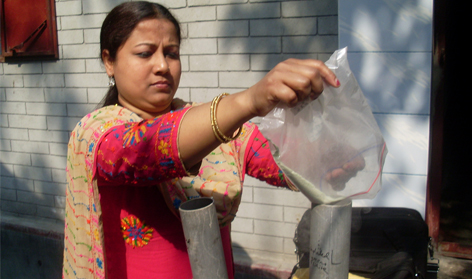Arsenic Filtration using Recycled Glass

Arsenic filtration using glass column, Bangladesh 2010
Ground water contamination by naturally occurring arsenic is a worldwide public health issue. In the case of Bangladesh, it is estimated that 77‐95 million people are drinking ground water containing 50 ppb of arsenic, which is higher than the Maximum Contaminant Level. Arsenic contamination of groundwater is the result of high concentration of arsenic in deeper levels of groundwater, which became a high profile problem in recent years due to the use of deep tube wells for water supply in the Ganges Delta, causing serious arsenic poisoning to large numbers of people. Bangladesh has huge potential to develop its Environment management & pollution control technology especially on arsenic removal from ground water, wastewater treatment and recovery of contaminated land.
Arsenic Filtration
Several technologies are currently promoted in Bangladesh for the removal of Arsenic. They claim to be effective in removing arsenic from tube well water. The SONO filter is the most promising filter using for arsenic removal. People use sand, charcoal, concrete, clay, wood ash etc as filter media.
Recycled Glass Filter
Around 1.2 million tonnes of glass are landfilled every year in England and Wales alone, and the EU Packaging and Waste Directive requires the UK to achieve a glass recycling rate of 60%by 2008.The Waste & Resources Action Programme (WARP) experimented with recycled glass as a tertiary filtration medium for the treatment of both potable and wastewaters. The experiments demonstrated that the effluent from the tertiary medium meets the effluent quality standards. Glass medium provides some advantages when it is used for waste water filtration for example-high angularity, spherecity, porosity and requires less back wash than the sand medium. WERG is investigating the applicability of recycled glass as a medium for the removal of arsenic from the arsenic contaminated ground and waste waters. Developing this technology would provide an integrated solution to arsenic contamination and particularly useful in the case of Bangladesh. It would provide a means of recycling glass in places where recycling facilities are not available and a new means for ground water and waste water cleaning.


